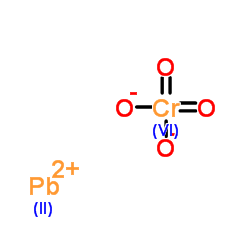Role of the Fancg gene in protecting cells from particulate chromate-induced chromosome instability.
Laura C Savery, Eliza Grlickova-Duzevik, Sandra S Wise, W Douglas Thompson, John M Hinz, Larry H Thompson, John Pierce Wise
文献索引:Mutat. Res. 626(1-2) , 120-7, (2007)
全文:HTML全文
摘要
Particulate hexavalent chromium (Cr(VI)) is a known human lung carcinogen. Cr(VI)-induced tumors exhibit chromosome instability (CIN), but the mechanisms underlying these effects are unknown. We investigated a possible role for the Fanconi anemia (FA) pathway in particulate Cr(VI)-induced chromosomal damage by focusing on the Fancg gene, which plays an important role in cellular resistance to DNA interstrand crosslinks. We used the isogenic Chinese hamster ovary (CHO) KO40 fancg mutant compared with parental and gene-complemented cells. We found that fancg cells treated with lead chromate had lower intracellular Cr ion levels than control cell lines. Accounting for differences of Cr ion levels between cell lines, we discovered that fancg cells treated with lead chromate had increased cytotoxicity and chromosomal aberrations, which was not observed after restoring the Fancg gene. Chromosomal damage was manifest as increased total chromosome damage and percent metaphases with damage, specifically an increase in chromatid and isochromatid breaks. We conclude that Fancg protects cells from particulate Cr(VI)-induced cytotoxicity and chromosome damage, which is consistent with the known sensitivity of fancg cells to crosslinking damage and the ability of Cr(VI) to produce crosslinks.
相关化合物
| 结构式 | 名称/CAS号 | 分子式 | 全部文献 |
|---|---|---|---|
 |
铬酸铅
CAS:7758-97-6 |
CrO4Pb |
|
Comparison of two particulate hexavalent chromium compounds:...
2004-01-01 [Environ. Mol. Mutagen. 44(2) , 156-62, (2004)] |
|
Particulate and soluble hexavalent chromium are cytotoxic an...
2006-11-07 [Mutat. Res. 610(1-2) , 2-7, (2006)] |
|
Homologous recombination repair protects against particulate...
2007-12-01 [Mutat. Res. 625(1-2) , 145-54, (2007)] |
|
Cytotoxicity and genotoxicity of hexavalent chromium in huma...
2009-01-01 [Comp. Biochem. Physiol. C. Toxicol. Pharmacol. 150(4) , 487-94, (2009)] |
|
Wavelength and pulse duration effects on laser induced chang...
2013-02-01 [Spectrochim. Acta. A. Mol. Biomol. Spectrosc. 102 , 7-14, (2013)] |